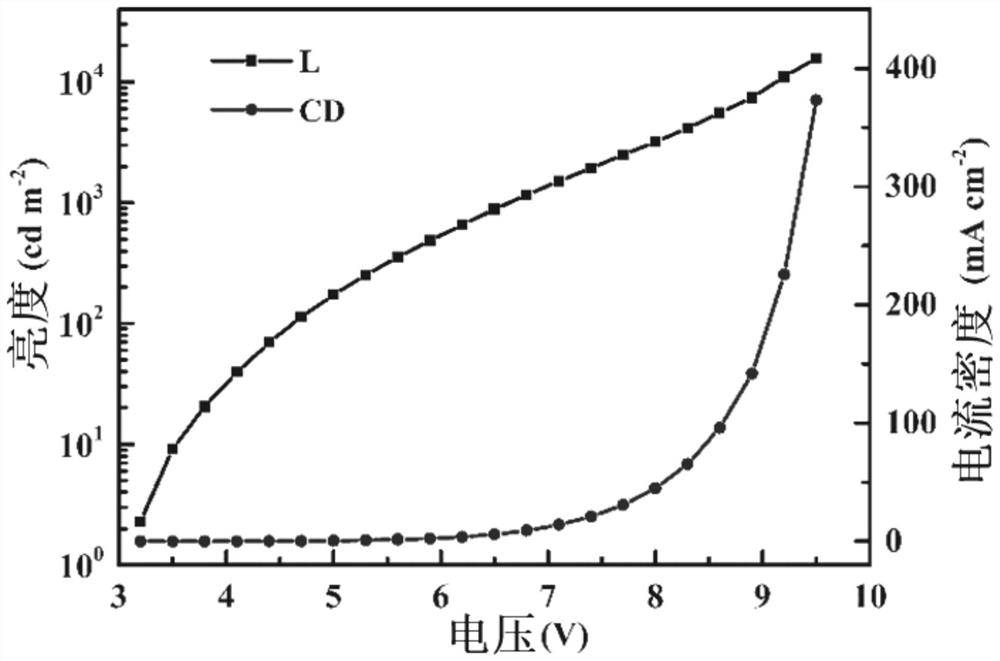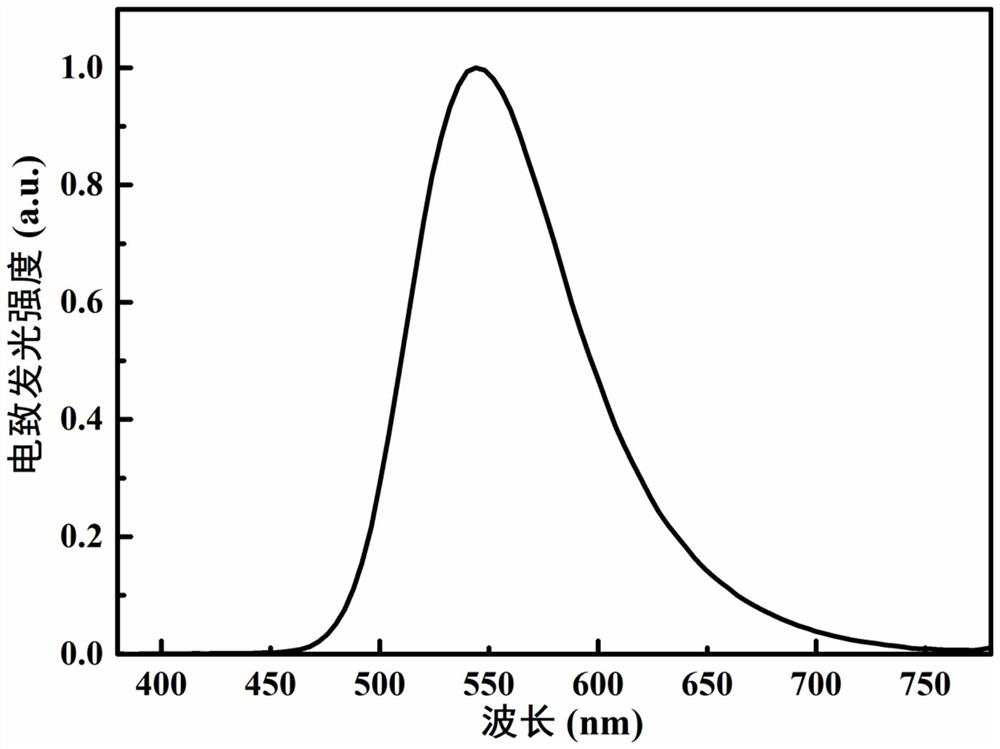Thermally activated fluorescent material with electron acceptor segment composed of carbon and hydrogen atoms and its application
A technology of host materials and oxygen atoms, applied in the field of fluorescent materials, can solve the problems of reduced lifespan and low device stability.
- Summary
- Abstract
- Description
- Claims
- Application Information
AI Technical Summary
Problems solved by technology
Method used
Image
Examples
Embodiment 1
[0046] Example 1: Preparation of 10-(acenaphtho[3,2,1,8-fghij]phenaph-7-yl)-10hydrophenoxazine
[0047]
[0048] Wherein, X is an oxygen atom.
[0049] The compound (2mmol, 0.7g) shown in formula (3) and ultra-dry dichloromethane (30.0mL), the CH of IBr 2 Cl 2 The solution (4ml, 1.0M) was mixed and the resulting mixture was stirred at room temperature for 4h, quenched with sodium bisulfate, extracted with dichloromethane and water. Then the organic phase was washed with anhydrous Na 2 SO 4 Drying, and then the residual solvent in the organic phase was removed under reduced pressure to obtain a solid, which is the compound represented by formula (4).
[0050]The solid obtained under reduced pressure (0.25 g) was added to toluene, followed by phenoxazine (1.1 mmol, 0.2 g), Pd(OAc) 2 (30mg), P(t-Bu) 3 (1mL), Cs 2 CO 3 (960mg), heated to 100°C and stirred under nitrogen for 10 hours. After cooling to room temperature, it was concentrated and purified by column chromato...
Embodiment 2
[0058] Fabrication and Performance Evaluation of Organic Electroluminescent Devices Using 10-(acenaphtho[3,2,1,8-fghij]perphene-7-yl)-10hydrophenoxazine Prepared in Example 1 as Fluorescent Doping Dye . The organic electroluminescent device is composed of a glass substrate 1, a hole transport layer 2, an electron blocking layer 3, a light emitting layer 4, an electron transport layer 5 and a cathode layer 6 arranged in sequence ( figure 1 ).
PUM
| Property | Measurement | Unit |
|---|---|---|
| thickness | aaaaa | aaaaa |
| thickness | aaaaa | aaaaa |
| thickness | aaaaa | aaaaa |
Abstract
Description
Claims
Application Information
 Login to View More
Login to View More - Generate Ideas
- Intellectual Property
- Life Sciences
- Materials
- Tech Scout
- Unparalleled Data Quality
- Higher Quality Content
- 60% Fewer Hallucinations
Browse by: Latest US Patents, China's latest patents, Technical Efficacy Thesaurus, Application Domain, Technology Topic, Popular Technical Reports.
© 2025 PatSnap. All rights reserved.Legal|Privacy policy|Modern Slavery Act Transparency Statement|Sitemap|About US| Contact US: help@patsnap.com



